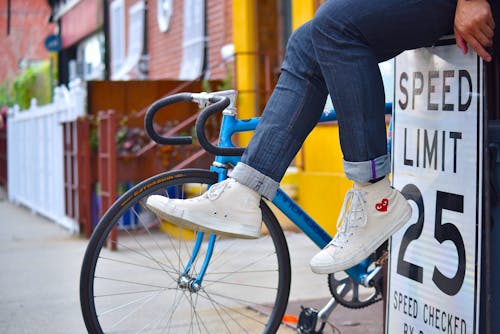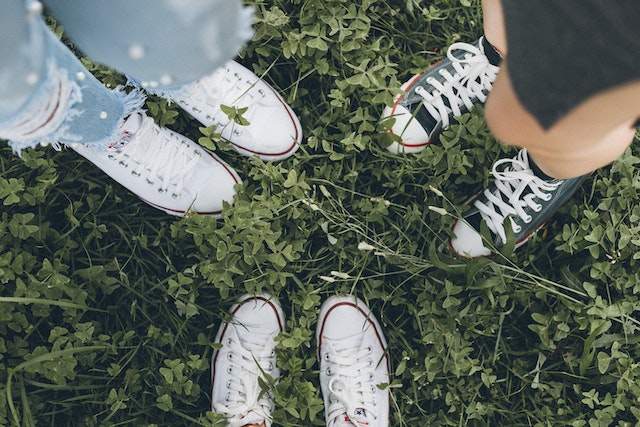Welcome to our comprehensive guide on choosing the perfect shoes for different types of physical activities. Whether you’re a seasoned athlete or just starting your fitness journey, having the right footwear is essential for optimal performance, comfort, and injury prevention. In this article, we’ll explore the key factors to consider when selecting running, hiking, athletic sports, and dancing shoes. So, let’s dive in and find your perfect fit!
1. The Importance of Proper Footwear

Before we delve into specific activities, let’s understand why choosing the right shoes matters. Proper footwear provides crucial support, stability, and protection for your feet, helping you avoid common injuries and perform at your best.
When engaging in physical activities, the repetitive impact on your feet can take a toll on your joints and muscles. Wearing shoes specifically designed for the activity can absorb shock, provide cushioning, and offer appropriate arch support, reducing the risk of discomfort, fatigue, and long-term damage.
2. Running Shoes: Light Up Your Stride
2.1 Anatomy of a Running Shoe
A running shoe consists of various components that work together to enhance your running experience. These include the midsole, outsole, upper, cushioning, and heel counter. Understanding these elements will help you make informed decisions when shopping for running shoes.
2.2 Types of Running Shoes
Not all running shoes are created equal. Different shoe types cater to various foot structures, pronation patterns, and running styles. Here are three common types:
1. Neutral Running Shoes: Designed for runners with normal pronation, these shoes offer a balanced combination of cushioning and flexibility.
2. Stability Running Shoes: Ideal for runners with mild to moderate overpronation, stability shoes provide additional support to prevent excessive inward rolling of the foot.
3. Motion Control Running Shoes: These shoes are suitable for runners with severe overpronation, providing maximum stability and control to limit foot motion.
2.3 Choosing the Right Running Shoe for Your Needs
To find the perfect running shoe, consider the following factors:
*a. Foot Type: Determine whether you have a neutral, high, or low arch. This will help you select shoes that provide adequate arch support.
*b. Pronation: Understand your pronation type (neutral, overpronation, or under pronation/supination) to choose shoes that correct any imbalances.
*c. Running Surface: Different shoes are designed for road running, trail running, or a combination of both. Select shoes that offer the required traction and durability for your running surface.
*d. Distance: Consider the distance you plan to run. Longer distances may require more cushioning and support.
3. Hiking Shoes: Conquer the Great Outdoors
3.1 Features of a Hiking Shoe
Hiking shoes are specially designed to withstand rugged terrains and provide stability and support for your feet and ankles. Here are some key features to consider:
a. Traction: Look for deep, multidirectional lugs on the outsole to provide excellent grip on various terrains.
b. Waterproofing: Consider shoes with waterproof membranes like Gore-Tex to keep your feet dry in wet conditions.
c. Ankle Support: Hiking shoes range from low-cut to mid-cut and high-cut options. Choose the height that suits your hiking style and offers the desired ankle support.
d. Durability: Opt for durable materials like leather or synthetic uppers that can withstand abrasion and protect your feet from debris.
3.2 Types of Hiking Shoes
Different types of hiking footwear are available to cater to varying hiking conditions and preferences. Here are three common options:
1. Hiking Shoes: Lightweight and flexible, ideal for day hikes on well-maintained trails.
2. Hiking Boots: Sturdier than hiking shoes, suitable for longer hikes and more challenging terrains.
3. Trail Runners: A hybrid between running shoes and hiking shoes, these provide the lightweight comfort of running shoes with added traction and durability for trail running or fast-paced hiking.
3.3 Finding the Perfect Fit for Hiking Shoes
Ensure your hiking shoes fit properly to avoid discomfort and blisters on the trail. Consider the following tips:
a. Sizing: Measure your feet accurately and try shoes on when your feet are slightly swollen at the end of the day.
b. Toe Space: Allow about a thumb’s width of space between your longest toe and the front of the shoe.
c. Heel Lockdown: Check for a snug fit around the heel to prevent slipping or rubbing.
d. Break-In Period: Gradually break in your hiking shoes before embarking on long hikes to avoid blisters and discomfort.
4. Athletic Shoes: Kick it Up a Notch
4.1 The Versatility of Athletic Shoes
Having the right shoes is crucial when engaging in athletic activities like basketball, tennis, or soccer. These shoes are specifically designed to enhance performance and provide the necessary support and stability required for quick movements and changes in direction.
4.2 Sport-Specific Shoe Recommendations
Different sports have unique footwear requirements. Here are some popular athletic shoes recommended for specific sports:
**a. Basketball**: High-top basketball shoes with ankle support and cushioning to absorb impact during jumps and landings.
**b. Tennis**: Tennis shoes with durable outsoles and lateral support for quick lateral movements on the court.
**c. Soccer**: Soccer cleats designed for traction on grass and varying field conditions, available in different styles for different playing surfaces.
### *4.3 Maintaining and Replacing Athletic Shoes*
To ensure your athletic shoes last and provide optimal performance, follow these tips:
**a. Cleaning**: Regularly clean your shoes according to the manufacturer’s instructions to remove dirt and maintain their appearance.
**b. Rotation**: Rotate between multiple pairs of athletic shoes to allow them to dry and decompress between workouts.
**c. Replacement**: Pay attention to the wear patterns and the condition of the cushioning. Generally, athletic shoes should be replaced every 300-500 miles or when the midsole shows signs of compression or wear.
**5. Dance Shoes: Move with Grace and Style**
*5.1 The Role of Dance Shoes*
Dance shoes are designed to provide flexibility, support, and traction, allowing dancers to move easily and gracefully. Different dance styles require specific shoes to accommodate their unique movements and techniques.
*5.2 Choosing Dance Shoes for Your Style*
Consider the following factors when selecting dance shoes for your preferred style:
**a. Ballet**: Ballet slippers with a snug but flexible uppers for optimal foot articulation and a split sole design for enhanced arch flexibility.
**b. Jazz**: Jazz shoes with a split sole, cushioning, and a slip-on or lace-up design to support quick movements and provide comfort.
**c. Hip-Hop**: Dance sneakers with shock absorption, ankle support, and a non-marking sole for traction and pivoting.
Conclusion
Choosing the right shoes for physical activities is paramount for a comfortable and enjoyable experience. Whether you’re a runner, hiker, athlete, or dancer, understanding the specific requirements of each activity will help you make informed decisions. Remember to consider factors such as foot type, pronation, activity surface, and personal comfort when selecting your footwear. Invest in quality shoes that provide the necessary support, protection,
and style to enhance your performance and keep you moving with confidence. So, lace up your perfect pair, hit the trails, court, or dance floor, and enjoy every step of your fitness journey!
You can get good pairs of sneakers on Multiversity Store
FAQs
1. How often should I replace my running shoes?
Replacing running shoes every 300-500 miles or when the midsole shows signs of compression or wear is generally recommended. Monitor the condition of your shoes and listen to your body for any signs of discomfort or reduced performance.
2. Can I wear running shoes for hiking?
While running shoes can offer lightweight comfort and flexibility, they may not provide the same level of ankle support and durability as hiking-specific footwear. For longer hikes or challenging terrains, it’s advisable to choose hiking shoes or boots designed to withstand rugged conditions.
3. Are there specific shoes for indoor and outdoor soccer?
Yes, different types of soccer shoes are designed for indoor and outdoor play. Indoor soccer shoes have non-marking soles for indoor courts, while outdoor soccer shoes have cleats or studs for traction on grass or turf surfaces. Select the appropriate type based on the playing surface.
4. Can I wear cross-training shoes for dance classes?
Cross-training shoes may offer some versatility but may not provide the specific features required for dance movements. Dance shoes, such as ballet slippers or jazz shoes, are designed with flexibility, traction, and support to enhance performance and protect your feet during dance classes.
5. Are there any special considerations for shoe selection in high-impact activities like aerobics or Zumba?
For high-impact activities like aerobics or Zumba, look for shoes that provide ample cushioning to absorb impact and protect your joints. Choose shoes with good arch support, lateral stability, and flexibility to facilitate the dynamic movements involved in these activities.






GIPHY App Key not set. Please check settings